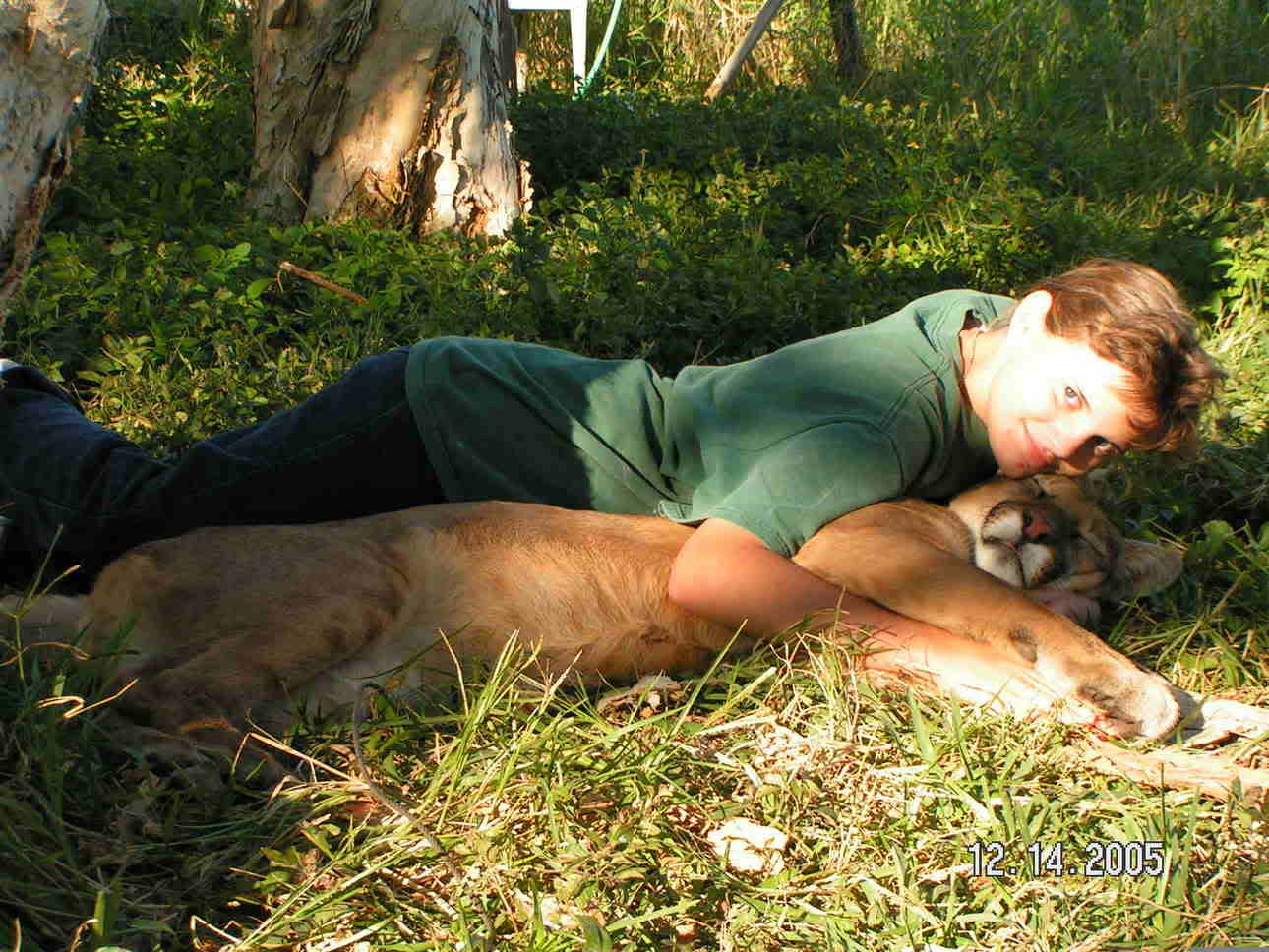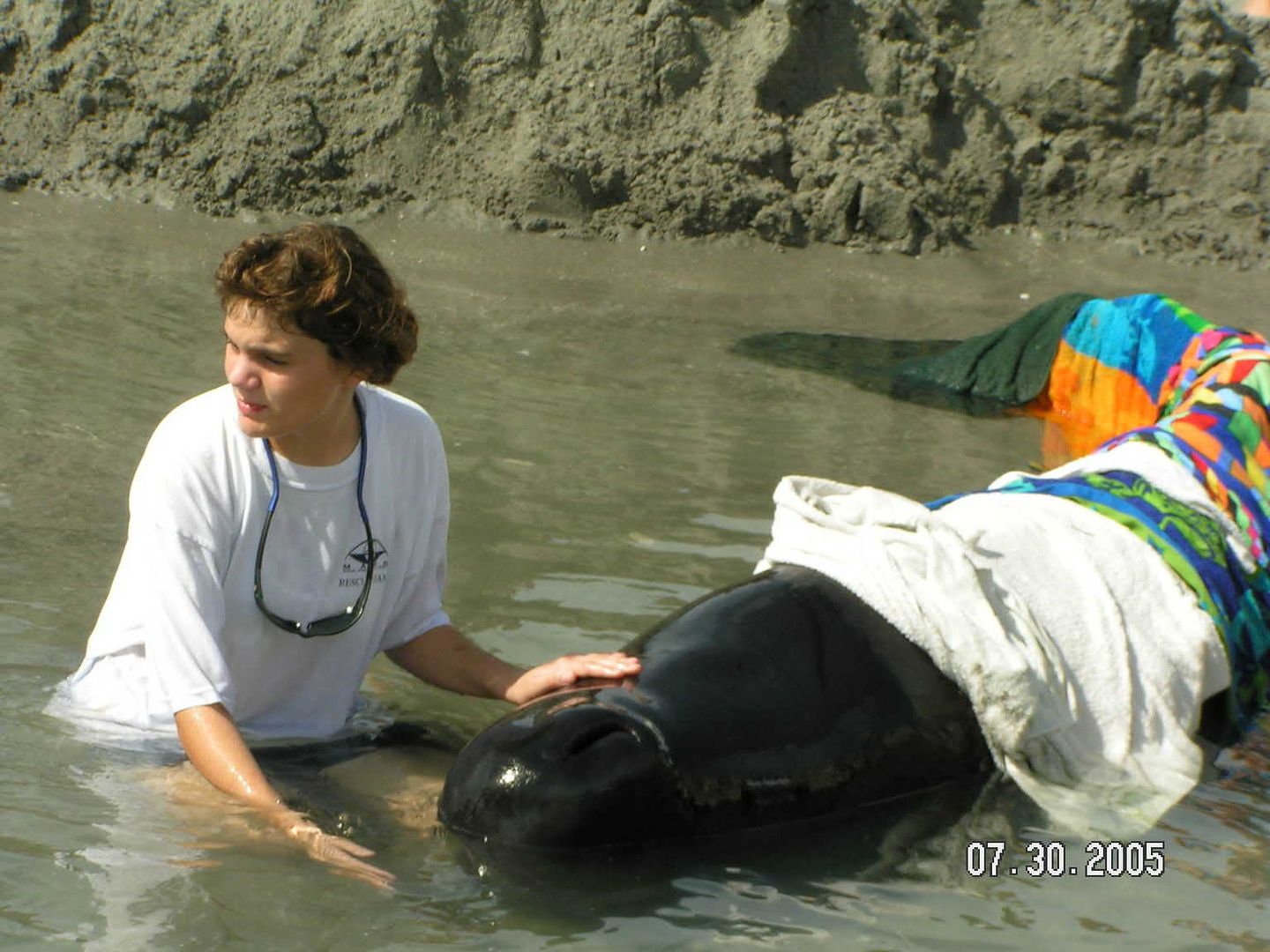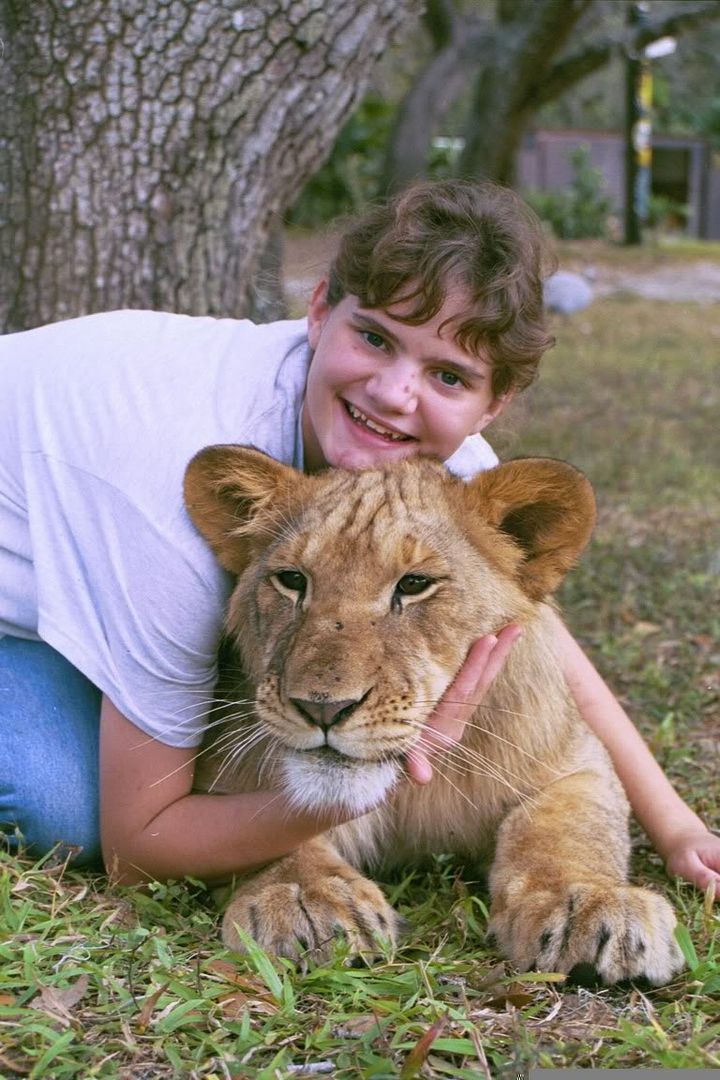But that's not what I'm here to talk about. I'm here to talk about my experience with working with wild animals, and how it's a risk of life.
 A very sleepy/lazy Montana (cougar) and I! He was NOT drugged in any way.
A very sleepy/lazy Montana (cougar) and I! He was NOT drugged in any way. Me and a newborn sperm whale
Me and a newborn sperm whaleWhen working with a wild animal, it is, in my opinion, a priority to teach them what is "appropriate play" with humans. Us humans are so fragile, compared to the gnashing teeth, razor-sharp claws, toxic venom and poison, and brute strength of the majority of the animal kingdom. They don't realize that, compared to them, us humans are merely weak mortals, and will suffer from serious injury or death if they tried to play with us like they did their animal brethren.
When I interact with my "kitties" (okay, so they're not really Felis domesticus... they belong to the Panthera genus), I start teaching them "no bite", "no hooks", and "gentle" at a very young age. When they bite or use their claws, I usually bite them on the ear, and then yell "NO HOOKS" or "NO BITE" at them, and they clearly learn the message. Of course, they are usually a bit shocked that I scolded them like their mother would if they were in the wild, but with a few reassuring chuffs or other sort of vocalization, the cats and I are back in perfect harmony. If they continue to play rough, they go back in their enclousre for a "time out", just like your sons or daughters might if they behave badly. Let it be known that I only put the cats in "time out" for a very short time, usually only about a minute... I would NEVER punish an animal, regardless of what it has done to me.
Because let's face it, who can stay mad at an animal for long? I certainly can't... In fact, I don't remember ever getting mad at an animal for anything! On the contrary, they receive constant love, affection, and admiration from me.
I would also like to say that, if it ever happens, that it will not be the animal's fault if I succumb to it. It will be 100% my fault; I gladly take all the blame.
On another side note, I have fallen in love with the sport of curling. Gotta thank my friend Jennifer Stuber for that one! She's an amazing photographer, and you should check out her website! http://www.jenstuberphotography.com/









